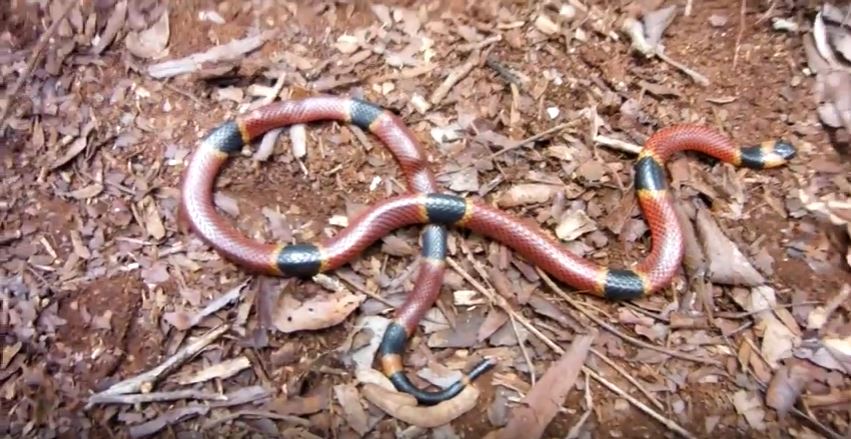The Coral Snake: Appearance, biology, life cycle, habitat, diet, behavior

The coral snake’s behavior
The coral snake’s behavior varies depending on the habitat. Some coral snakes entirely live in the water whilst some of them can be found on the floor of a jungle.
The coral snake’s diet
Coral snakes are like many other snake species in their diet. They feed on small animals like birds, lizards and rats. They can also feed on other snakes that are smaller in size. The coral snake has fangs that can be venomous to kill their prey. Coral snakes bite longer before letting go because their venom travels quite slowly. Thus, they hold on to their prey and chew it slowly so that the venom can have an effect. The coral snakes are not an aggressive species. They in fact move slowly towards their prey. Coral snake can be kept in captivity for up to 7 years.
The Coral snake’s habitat
You can find coral snakes in many of the US states. They scatter in Louisiana and some of them can be found in North Carolina. Coral snakes are frequently found in Southeast America, and some of them can also be found in Kentucky. You can often find them in oak tree or pine, although some of them prefer to stay in hardwoods.
The coral snakes often have different behaviors due to the separated environments they live in. All coral snakes are dangerous to humans. When it bites, it can leave its victim to die. The fangs can penetrate even the thickest clothing like leather. Thus, when a person is bitten by a coral snake, they must go to a hospital for medical attention. There is a powerful toxin carried in the venom. It can make a person becomes paralyzed and unable to breathe. Sometimes the victim needs to use artificial respiration with anecdote medication that will cause the venom to flush out. It can take hours before the victim dies.
Coral snakes inhabit popular areas which are densely populated by humans. This makes it a threat that everyone should be aware of.
Go back to the How to Get Rid of Snakes page or email us if you have any other questions about The Coral Snake: Appearance, biology, life cycle, habitat, diet, behavior
About Us
We are the Pest Education Network, a non-profit organization that focuses on wildlife and pest removal education. Our approach utilizes Integrated Pest Management, a strategy advocating prevention and humane methods.


